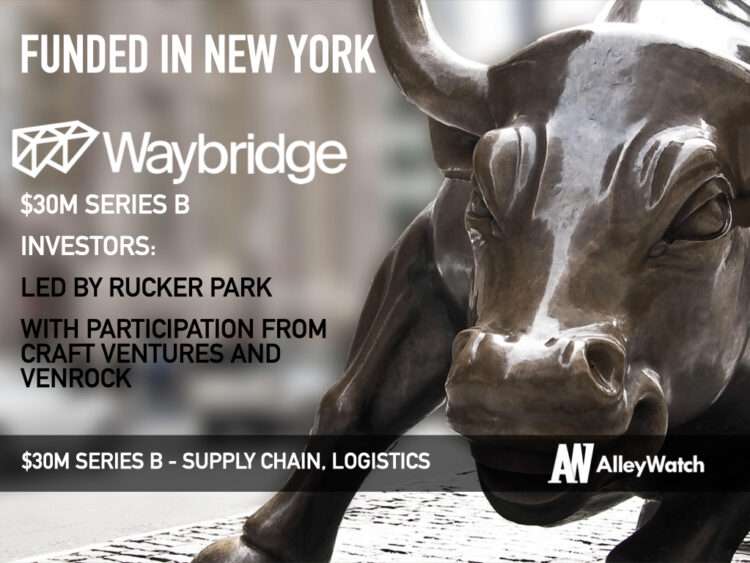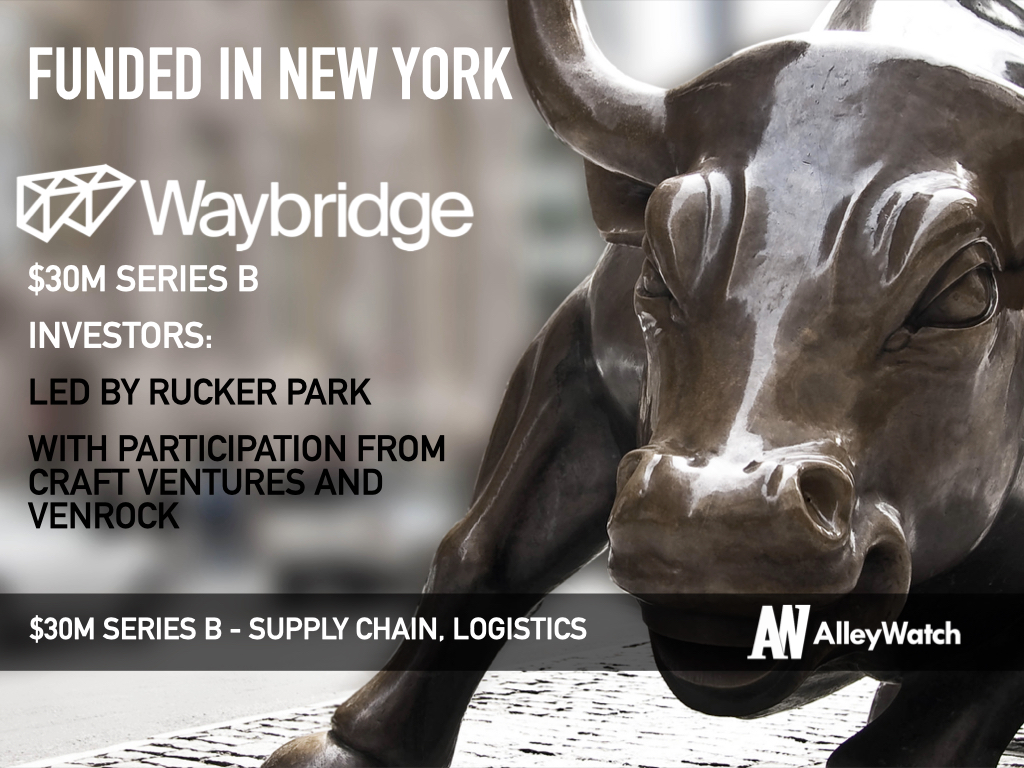Supply chain disruptions were up 67% in 2020 and 83% percent of these disruptions were caused by humans somewhere in the many moving parts that need to work in unison, whether at the supplier, trader, bank, or manufacturer end. The pandemic exposed shortcomings that were decades in the making. The importance of how technologies can bring supply chain transparency and flexibility is now at the forefront with unprecedented attention given to visibility and decision-making tools to ensure that our global, interconnected supply chain remains as resilient as it can be. Waybridge is a supply chain management platform focused on raw materials, the core components at the top of the funnel for most supply chains. The platform minimizes the resources spent on previously manual processes and provides a holistic view of shipments, inventory, and even offers alternative suppliers and purchasers so that businesses can be prepared in case of disruption. Waybridge is initially focused on non-ferrous metals with plans to expand into other materials and also increase the capabilities the platform offers to include tracing, sustainability, and trade finance.
AlleyWatch caught up with CEO and serial entrepreneur Brian O’Kelley (cofounded AppNexus) to learn more about how the business came to fruition, the company’s strategic plans, how recent events have accelerated the digital transformation for supply chain management, the company’s latest round of funding, which brings the total funding raised to $40M, and much, much more.
Who were your investors and how much did you raise?
Waybridge raised a $30M Series B led by Rucker Park with participation from Craft Ventures and Venrock.
Tell us about the product or service that Waybridge offers.
The Waybridge platform is a supply chain management system built specifically for raw materials: the first links in the global supply chain. A key insight is that raw materials are both physical and financial assets, which means that you have to be able to combine both to help a manufacturer keep their plant running and to make their business resilient. You can look at the recent Suez Canal incident where companies (including some of our clients) were making a difficult tradeoff: do we wait for the canal to clear and hope we don’t have to shut down our factory? Or do we go source some other material that may cost a lot more, but keep our factory running? By integrating with suppliers, traders, banks, and manufacturers and layering in data science, we can provide a collaborative forecast that can save our customers millions of dollars in lost productivity, working capital, and procurement cost.
What inspired the start of Waybridge?
Two of our founders, Scott Evans and Andrea Aranguren, had seen first-hand how big the opportunity was for technology to revolutionize the physical commodities industry. As they explained the space to Andrew Sweeney and me, we started to get excited about how similar these challenges were to what we had seen – and solved – in online advertising. We all got excited about bringing our collective experience together.
For one thing, we’re trying to solve real-world problems. I think it’s easy, especially in New York, to remember that half of the global economy is manufacturing and construction and agriculture and all of these completely offline industries… but most technology people (like me) take them for granted.
What market does Waybridge target and how big is it?
The global physical commodities market is about $4 trillion. It’s big.
What’s your business model?
Software as a service. We charge a subscription fee to our customers.
How has COVID-19 impacted the business??
It hasn’t had a huge direct impact on us, but the massive volatility we’ve seen in transportation, commodities prices, and industrial demand has made it completely clear that companies need better control and visibility into their supply chain, but also into their own business. Many manufacturers think that they’re hedged or that they have good technology infrastructure – but they’re finding out the hard way that they aren’t and they don’t.
What was the funding process like?
Over the past year, we’ve signed some of the largest non-ferrous metals consumers in the world to use the platform, as well as many of the largest suppliers. With this kind of traction, a great team, and a massive market, our plan was to run a process in the summer. Instead, at a board meeting a few months ago, Marissa Campise (from Rucker Park) offered to preempt the process and lead a Series B.
Over the past year, we’ve signed some of the largest non-ferrous metals consumers in the world to use the platform, as well as many of the largest suppliers. With this kind of traction, a great team, and a massive market, our plan was to run a process in the summer. Instead, at a board meeting a few months ago, Marissa Campise (from Rucker Park) offered to preempt the process and lead a Series B.
What are the biggest challenges that you faced while raising capital?
The hardest part – which I know is a privilege – was trying to manage all of the investors that wanted an allocation.
What are the milestones you plan to achieve in the next six months?
We are in the process of deploying our platform to a number of customers. We’re starting to build out the commercial team to expand into new markets.
What advice can you offer companies in New York that do not have a fresh injection of capital in the bank?
Move to Miami! No, I’m kidding. This is a great time to build in NYC, and there’s a ton of talent and capital and energy here… I’d just keep cranking.
Where do you see the company going now over the near term?
For the next couple of months, we’re laser-focused on deploying for our customers and scaling up for expansion.
What’s your favorite outdoor dining restaurant in NYC
Noodle Pudding in Brooklyn Heights!
You are seconds away from signing up for the hottest list in Tech!
Sign up today






